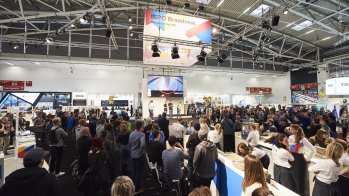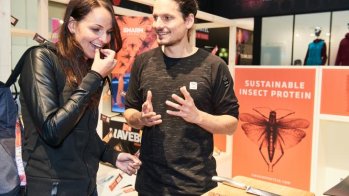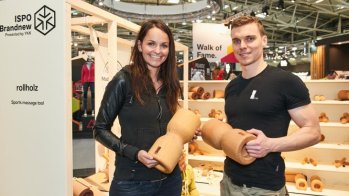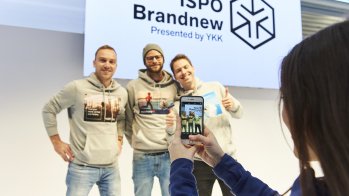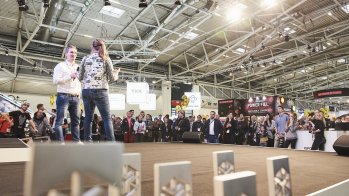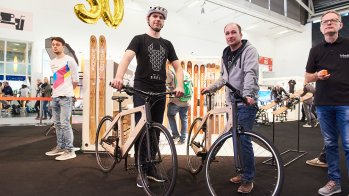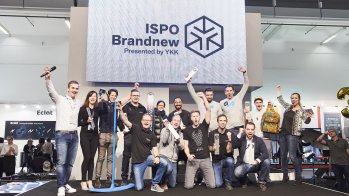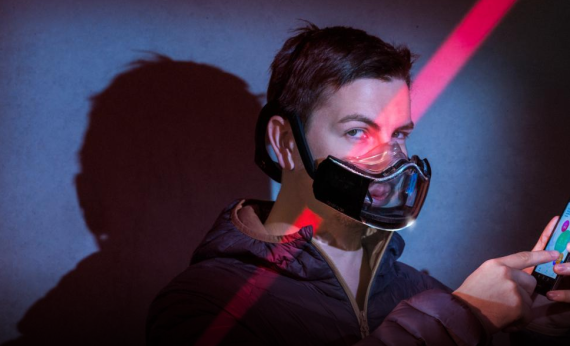
With a team of just four employees and six consultants, the US company Microsfere developed an innovation that makes sports in urban surroundings even healthier.
Microsfere's Athlete’s Mask is a new athletic breathing mask for highly polluted areas. The intelligent airflow system allows natural breathing and proper ventilation for extended activities. The mask connects with mobile devices and displays in-depth performance data drawn from the athlete’s breath formerly only available in a lab environment.
The ISPO Brandnew jury honored Microsfere as ISPO Brandnew winner in the Wearables Category. In our interview founder Judit Fabian talked about the difficult development process and how a move to Silicon Valley finally brought a breakthrough.
ISPO.com: Face masks are widely known, especially in Asia. What makes the Microsfere athlete's mask stand out?
Judit Fabian: Our product is protection from air pollution, especially for athletes that also gathers performance data. The opportunity stared at me when I lived in Asia and experienced extreme air pollution. I was surprised that despite the magnitude of the problem, nobody created a respiratory protection device that is not only comfortable to breathe in, but is appealing.
How hard is it for a startup to develop such a state of the art product?
Obstacles abound, we had a very complex development with hardware (mask body), electronics and software elements, each one of them a unique development piece on their own. It involved research and development of a better way to build a mask, the hardware development that had the challenges on its own, electronics development that held many traps for us, and software development that also was trying to do something unprecedented in the market.
Because we designed a device that is worn on the head, it had many complexities in the requirements: stability while running, sweat proof, sanitization-friendly, light, good looking, safe to wear, has to hold all electronics, battery has to last long, has to fit tight against the face – I could go on about all the criteria we had to meet. Finding the right talent for each of the development elements has been quite hard. Development has been expensive, but much less expensive than many people predicted.
ISPO Brandnew 2018 at ISPO Munich 2018 in pictures
How did you build up your network and look for investors?
Being a startup business, searching for investors is a constant quest. I constantly keep connected to my target market, as well as learn about best ways to get to my target market. The landscape is constantly changing, which is a challenge.
What are your most important advices for other founders?
Lots of advice, not sure where to start and certainly does not fit the scope of this interview. Getting the best talent is crucial, simplifying makes for a more efficient development, constantly talk to the target market, don’t worry about others in the market, just drive your own cause – as long as the money last, you will get there.
In retrospect, what was the biggest mistake you made when starting your company?
The biggest mistake was not bringing the right talent into the company at the beginning. I lived in Asia, where I did not have the right network of engineers, and until I moved to Silicon Valley, it was a tremendous challenge to find the right talent. That said, I do believe that working with the range of people that I did before hiring people in San Francisco has made the product better. I do believe that we would have had a much less unique product had I not had the exposure to so many engineers.
How difficult is it for young companies to establish themselves in your market segment?
Tremendously difficult. Because we are a hardware company with a complex structure, and a software element, we are riskier that any of the elements that we create will not hit the mark.
What are the next steps in the development of Microsfere?
We are developing retail, distribution and partnership relationships worldwide. Next step is to take our product into various different uses.
How have you benefited from ISPO Brandnew?
Visibility has certainly been a great benefit. We have been exposed to areas of uses and geographies that we have not explored.
- Awards
- Mountain sports
- Bike
- Fitness
- Health
- ISPO Munich
- Running
- Brands
- Sustainability
- Olympia
- OutDoor
- Promotion
- Sports Business
- Textrends
- Triathlon
- Water sports
- Winter sports
- eSports
- SportsTech
- OutDoor by ISPO
- Heroes
- Transformation
- Sport Fashion
- Urban Culture
- Challenges of a CEO
- Trade fairs
- Sports
- Find the Balance
- Product reviews
- Newsletter Exclusive Area
- Magazine


